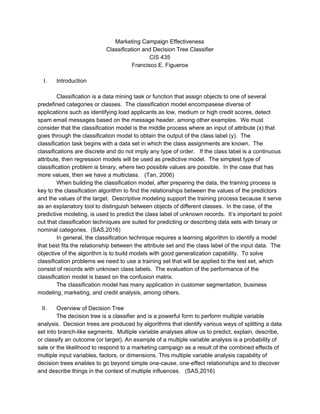This document discusses classification using decision tree models. It begins with an introduction to classification, describing it as assigning objects to predefined categories. Decision trees are then overviewed as a powerful classifier that uses a hierarchical structure to split a dataset. Important parameters for evaluating model accuracy are covered, such as precision, recall, and AUC. The document also describes an exercise using the Weka tool to build decision trees on a dataset about term deposit subscriptions. It concludes with discussing uses of decision trees for applications like marketing and medical diagnosis.



